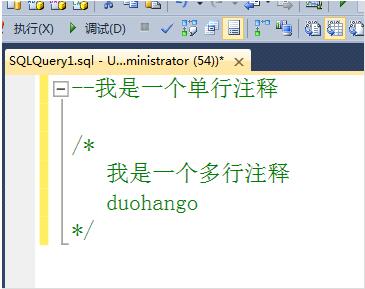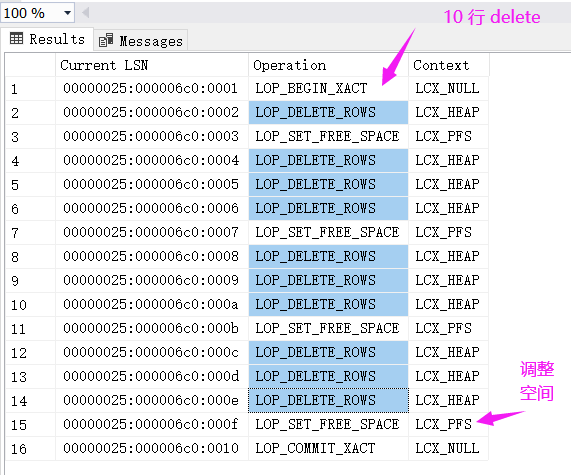MyBatis 的一个强大的特性之一通常是它的动态 SQL 能力。如果你有使用 JDBC 或其他 相似框架的经验,你就明白条件地串联 SQL 字符串在一起是多么的痛苦,确保不能忘了空 格或在列表的最后省略逗号。动态 SQL 可以彻底处理这种痛苦。
通常使用动态SQL不可能是独立的一部分,MyBatis当然使用一种强大的动态SQL语言来改进这种情形,这种语言可以被用在任意映射的SQL语句中。
动态SQL元素和使用 JSTL或其他相似的基于XML的文本处理器相似。在MyBatis之前的版本中,有很多的元素需要来了解。MyBatis3大大提升了它们,现在用不到原先一半 的元素就能工作了。MyBatis采用功能强大的基于OGNL的表达式来消除其他元素。
MyBatis中用于实现动态SQL的元素主要有:
if
choose(when,otherwise)
trim
where
set
foreach
if就是简单的条件判断,利用if语句我们可以实现某些简单的条件选择。
先来看如下一个例子:
Xml代码
<select id="dynamicIfTest" parameterType="Blog" resultType="Blog">
select * from t_blog where 11 = 1
<if test="title != null">
and title = #{title}
</if>
<if test="content != null">
and content = #{content}
</if>
<if test="owner != null">
and owner = #{owner}
</if>
</select>
这条语句的意思非常简单,如果你提供了title参数,那么就要满足title=#{title},同样如果你提供了Content和Owner的时候,它们也需要满足相应的条件,之后就是返回满足这些条件的所有Blog,这是非常有用的一个功能,以往我们使用其他类型框架或者直接使用JDBC的时候, 如果我们要达到同样的选择效果的时候,我们就需要拼SQL语句,这是极其麻烦的,比起来,上述的动态SQL就要简单多了。
choose元素的作用就相当于JAVA中的switch语句,基本上跟JSTL中的choose的作用和用法是一样的,通常都是与when和otherwise搭配的。
看如下一个例子:
Xml代码
<select id="dynamicChooseTest" parameterType="Blog" resultType="Blog">
select * from t_blog where 11 = 1
<choose>
<when test="title != null">
and title = #{title}
</when>
<when test="content != null">
and content = #{content}
</when>
<otherwise>
and owner = "owner1"
</otherwise>
</choose>
</select>
when元素表示当when中的条件满足的时候就输出其中的内容,跟JAVA中的switch效果差不多的是按照条件的顺序,当when中有条件满足的时候,就会跳出choose,即所有的when和otherwise条件中,只有一个会输出,当所有的我很条件都不满足的时候就输出otherwise中的内容。
所以上述语句的意思非常简单, 当title!=null的时候就输出and titlte = #{title},不再往下判断条件,当title为空且content!=null的时候就输出and content = #{content},当所有条件都不满足的时候就输出otherwise中的内容。
where语句的作用主要是简化SQL语句中where中的条件判断的,先看一个例子,再解释一下where的好处。
Xml代码
<select id="dynamicWhereTest" parameterType="Blog" resultType="Blog">
select * from t_blog
<where>
<if test="title != null">
title = #{title}
</if>
<if test="content != null">
and content = #{content}
</if>
<if test="owner != null">
and owner = #{owner}
</if>
</where>
</select>
where元素的作用是会在写入where元素的地方输出一个where,另外一个好处是你不需要考虑where元素里面的条件输出是什么样子的,MyBatis会智能的帮你处理,如果所有的条件都不满足那么MyBatis就会查出所有的记录,如果输出后是and 开头的,MyBatis会把第一个and忽略,当然如果是or开头的,MyBatis也会把它忽略;此外,在where元素中你不需要考虑空格的问题,MyBatis会智能的帮你加上。像上述例子中,如果title=null, 而content != null,那么输出的整个语句会是select * from t_blog where content = #{content},而不是select * from t_blog where and content = #{content},因为MyBatis会智能的把首个and 或 or 给忽略。
trim元素的主要功能是可以在自己包含的内容前加上某些前缀,也可以在其后加上某些后缀,与之对应的属性是prefix和suffix;可以把包含内容的首部某些内容覆盖,即忽略,也可以把尾部的某些内容覆盖,对应的属性是prefixOverrides和suffixOverrides;正因为trim有这样的功能,所以我们也可以非常简单的利用trim来代替where元素的功能,示例代码如下:
Xml代码
<select id="dynamicTrimTest" parameterType="Blog" resultType="Blog">
select * from t_blog
<trim prefix="where" prefixOverrides="and |or">
<if test="title != null">
title = #{title}
</if>
<if test="content != null">
and content = #{content}
</if>
<if test="owner != null">
or owner = #{owner}
</if>
</trim>
</select>
set元素主要是用在更新操作的时候,它的主要功能和where元素其实是差不多的,主要是在包含的语句前输出一个set,然后如果包含的语句是以逗号结束的话将会把该逗号忽略,如果set包含的内容为空的话则会出错。有了set元素我们就可以动态的更新那些修改了的字段。下面是一段示例代码:
Xml代码
<update id="dynamicSetTest" parameterType="Blog">
update t_blog
<set>
<if test="title != null">
title = #{title},
</if>
<if test="content != null">
content = #{content},
</if>
<if test="owner != null">
owner = #{owner}
</if>
</set>
where id = #{id}
</update>
上述示例代码中,如果set中一个条件都不满足,即set中包含的内容为空的时候就会报错。
foreach的主要用在构建in条件中,它可以在SQL语句中进行迭代一个集合。foreach元素的属性主要有item,index,collection,open,separator,close。item表示集合中每一个元素进行迭代时的别名,index指定一个名字,用于表示在迭代过程中,每次迭代到的位置,open表示该语句以什么开始,separator表示在每次进行迭代之间以什么符号作为分隔符,close表示以什么结束,在使用foreach的时候最关键的也是最容易出错的就是collection属性,该属性是必须指定的,但是在不同情况下,该属性的值是不一样的,主要有一下3种情况:
1.如果传入的是单参数且参数类型是一个List的时候,collection属性值为list
2.如果传入的是单参数且参数类型是一个array数组的时候,collection的属性值为array
3.如果传入的参数是多个的时候,我们就需要把它们封装成一个Map了,当然单参数也可以封装成map,实际上如果你在传入参数的时候,在MyBatis里面也是会把它封装成一个Map的,map的key就是参数名,所以这个时候collection属性值就是传入的List或array对象在自己封装的map里面的key
下面分别来看看上述三种情况的示例代码:
1.单参数List的类型:
Xml代码
<select id="dynamicForeachTest" resultType="Blog">
select * from t_blog where id in
<foreach collection="list" index="index" item="item" open="(" separator="," close=")">
#{item}
</foreach>
</select>
上述collection的值为list,对应的Mapper是这样的
Java代码
public List<Blog> dynamicForeachTest(List<Integer> ids);
测试代码:
Java代码
@Test
public void dynamicForeachTest() {
SqlSession session = Util.getSqlSessionFactory().openSession();
BlogMapper blogMapper = session.getMapper(BlogMapper.class);
List<Integer> ids = new ArrayList<Integer>();
ids.add(1);
ids.add(3);
ids.add(6);
List<Blog> blogs = blogMapper.dynamicForeachTest(ids);
for (Blog blog : blogs)
System.out.println(blog);
session.close();
}
2.单参数array数组的类型:
Xml代码
<select id="dynamicForeach2Test" resultType="Blog">
select * from t_blog where id in
<foreach collection="array" index="index" item="item" open="(" separator="," close=")">
#{item}
</foreach>
</select>
上述collection为array,对应的Mapper代码:
Java代码
public List<Blog> dynamicForeach2Test(int[] ids);
对应的测试代码:
Java代码
@Test
public void dynamicForeach2Test() {
SqlSession session = Util.getSqlSessionFactory().openSession();
BlogMapper blogMapper = session.getMapper(BlogMapper.class);
int[] ids = new int[] {1,3,6,9};
List<Blog> blogs = blogMapper.dynamicForeach2Test(ids);
for (Blog blog : blogs)
System.out.println(blog);
session.close();
}
3.自己把参数封装成Map的类型
Xml代码
<select id="dynamicForeach3Test" resultType="Blog">
select * from t_blog where title like "%"#{title}"%" and id in
<foreach collection="ids" index="index" item="item" open="(" separator="," close=")">
#{item}
</foreach>
</select>
上述collection的值为ids,是传入的参数Map的key,对应的Mapper代码:
Java代码
public List<Blog> dynamicForeach3Test(Map<String, Object> params);
对应测试代码:
Java代码
@Test
public void dynamicForeach3Test() {
SqlSession session = Util.getSqlSessionFactory().openSession();
BlogMapper blogMapper = session.getMapper(BlogMapper.class);
final List<Integer> ids = new ArrayList<Integer>();
ids.add(1);
ids.add(2);
ids.add(3);
ids.add(6);
ids.add(7);
ids.add(9);
Map<String, Object> params = new HashMap<String, Object>();
params.put("ids", ids);
params.put("title", "中国");
List<Blog> blogs = blogMapper.dynamicForeach3Test(params);
for (Blog blog : blogs)
System.out.println(blog);
session.close();
}
以上内容是本文叙述mybatis的动态sql详解,希望大家喜欢。
本文mybatis的动态sql详解(精)到此结束。欲望得不到满足痛苦;欲望一旦满足就无聊,生命就是在痛苦和无聊之间摇摆。小编再次感谢大家对我们的支持!





